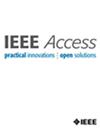MASC: Wearable Design for Infectious Disease Detection Through Machine Learning
IF 3.4
3区 计算机科学
Q2 COMPUTER SCIENCE, INFORMATION SYSTEMS
引用次数: 0
Abstract
We present an innovative approach for designing a wearable solution that utilizes machine learning to systematically optimize the monitoring of vital signs for early detection of COVID-19 infections in symptomatic patients. This approach correlates sensor data trends with disease predictions, utilizing existing hospital patient data to enhance diagnosis accuracy. Our methodology offers a scalable, cost-effective solution to manage and prevent infectious diseases beyond COVID-19, addressing the limitations of traditional diagnostic methods. A functional prototype has been developed, supporting the effectiveness of continuous health monitoring in infection detection. The wearable continuously monitors key vitals such as body temperature, heart rate, respiratory rate, and oxygen saturation levels, providing an early warning system for timely medical intervention. This wearable device holds promise for transforming infectious disease detection and management, benefiting healthcare professionals and individuals alike.求助全文
约1分钟内获得全文
求助全文
来源期刊

IEEE Access
COMPUTER SCIENCE, INFORMATION SYSTEMSENGIN-ENGINEERING, ELECTRICAL & ELECTRONIC
CiteScore
9.80
自引率
7.70%
发文量
6673
审稿时长
6 weeks
期刊介绍:
IEEE Access® is a multidisciplinary, open access (OA), applications-oriented, all-electronic archival journal that continuously presents the results of original research or development across all of IEEE''s fields of interest.
IEEE Access will publish articles that are of high interest to readers, original, technically correct, and clearly presented. Supported by author publication charges (APC), its hallmarks are a rapid peer review and publication process with open access to all readers. Unlike IEEE''s traditional Transactions or Journals, reviews are "binary", in that reviewers will either Accept or Reject an article in the form it is submitted in order to achieve rapid turnaround. Especially encouraged are submissions on:
Multidisciplinary topics, or applications-oriented articles and negative results that do not fit within the scope of IEEE''s traditional journals.
Practical articles discussing new experiments or measurement techniques, interesting solutions to engineering.
Development of new or improved fabrication or manufacturing techniques.
Reviews or survey articles of new or evolving fields oriented to assist others in understanding the new area.
 求助内容:
求助内容: 应助结果提醒方式:
应助结果提醒方式:


